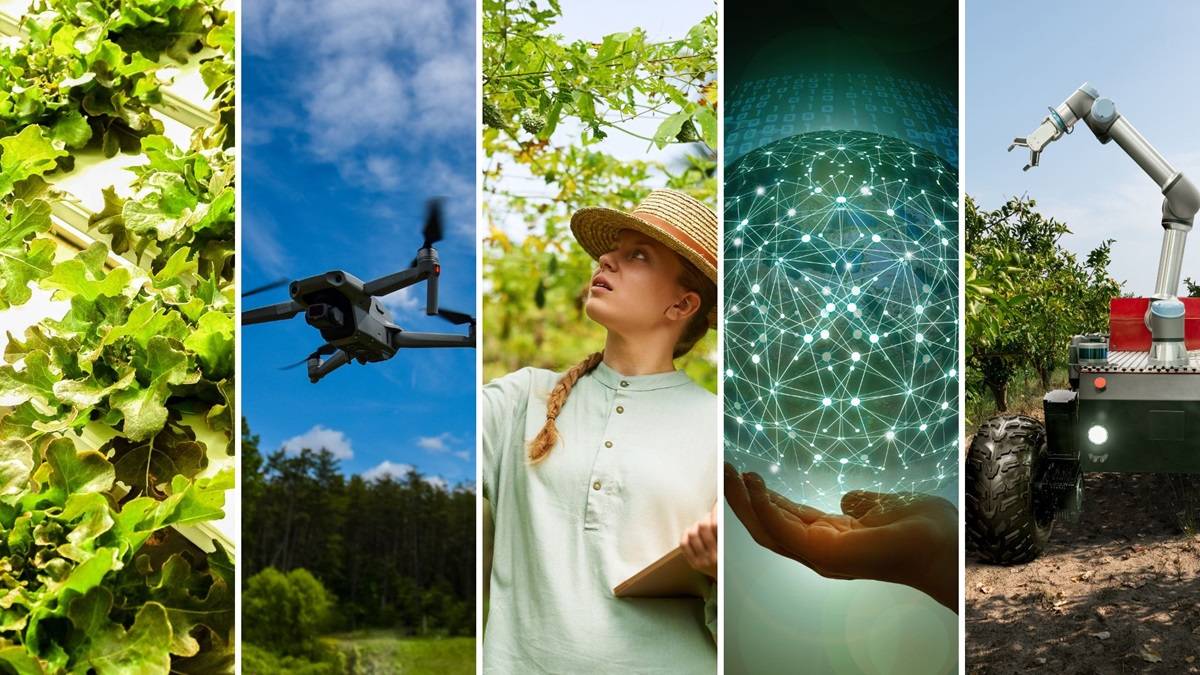
The agricultural sector has always been at the forefront of human civilization, driving the food supply and fostering economic growth. However, traditional farming practices face significant challenges, including climate change, resource limitations, and a growing global population. In response, innovative farming technologies are emerging, transforming agricultural practices and promising a more sustainable and efficient future.
Precision Agriculture: Power of Data
Precision agriculture leverages advanced technologies such as GPS, IoT (Internet of Things), and big data analytics to optimize farming practices. By collecting and analyzing data on soil conditions, weather patterns, and crop health, farmers can make informed decisions that enhance productivity and reduce waste. For example, soil sensors can measure moisture levels, nutrient content, and pH balance, allowing farmers to apply water and fertilizers precisely where needed. This targeted approach not only boosts crop yields but also conserves resources, promoting environmental sustainability.
Drones and satellite imagery are integral components of precision agriculture, providing real-time monitoring of large agricultural areas. These technologies enable farmers to detect early signs of pest infestations, disease outbreaks, or nutrient deficiencies, facilitating timely interventions that prevent significant crop losses. Additionally, automated machinery equipped with GPS technology ensures accurate planting, harvesting, and application of treatments, further enhancing efficiency and reducing labor costs.
Vertical Farming: Maximizing Space Efficiency
Vertical farming is revolutionizing urban agriculture by growing crops in vertically stacked layers within controlled environments. This innovative approach addresses the limitations of traditional farming by utilizing less land and water while producing higher yields. Vertical farms often employ hydroponic or aeroponic systems, where plants are grown in nutrient-rich solutions or misted with nutrient-laden water, respectively. These methods eliminate the need for soil and reduce water usage by up to 90% compared to conventional farming.
LED lighting plays a crucial role in vertical farming, providing the optimal light spectrum for plant growth and enabling year-round cultivation. By fine-tuning light intensity and duration, farmers can accelerate growth cycles and increase crop turnover. Moreover, vertical farms can be established in urban areas, reducing transportation costs and ensuring fresh produce availability in city centers.
Genetic Engineering: Enhancing Crop Resilience
Genetic engineering is a powerful tool in modern agriculture, allowing scientists to develop crops with enhanced traits such as pest resistance, drought tolerance, and improved nutritional content. Through techniques like CRISPR-Cas9, researchers can precisely edit genes to introduce desirable characteristics, reducing the reliance on chemical pesticides and fertilizers.
For instance, genetically modified (GM) crops such as Bt cotton and Bt corn have been engineered to produce a protein toxic to specific pests, minimizing crop damage and increasing yields. Similarly, drought-resistant crops have been developed to thrive in arid conditions, ensuring food security in regions prone to water scarcity. While the adoption of GM crops remains a contentious issue, their potential to address global food challenges cannot be overlooked.
Robotics & Automation: Reducing Labor Dependence
The integration of robotics and automation in agriculture is streamlining various farming operations, from planting and harvesting to sorting and packaging. Autonomous tractors and harvesters equipped with AI and machine learning algorithms can perform tasks with high precision and efficiency, reducing the need for manual labor. These machines can work around the clock, increasing productivity and addressing labor shortages that often plague the agricultural sector.
Moreover, robotic systems are being developed for delicate tasks such as fruit picking and pruning, which require a high degree of dexterity. For example, robotic arms with advanced sensors and imaging technology can identify ripe fruits and gently pick them without causing damage. This not only improves the quality of the harvested produce but also reduces post-harvest losses.
Blockchain Technology: Ensuring Transparency & Traceability
Blockchain technology is gaining traction in agriculture, providing a transparent and tamper-proof system for tracking the journey of food products from farm to table. By recording every transaction and movement of goods on a decentralized ledger, blockchain ensures the authenticity and safety of agricultural products. Consumers can access information about the origin, production methods, and supply chain history of their food, fostering trust and promoting sustainable practices.
For farmers, blockchain offers improved record-keeping and streamlined transactions, reducing administrative burdens and enhancing market access. Smart contracts, a feature of blockchain technology, can automate payment processes and ensure fair compensation for farmers, boosting their financial security.
Innovative farming technologies are reshaping agricultural practices, addressing the challenges of modern farming, and paving the way for a more sustainable and efficient future. Precision agriculture, vertical farming, genetic engineering, robotics, and blockchain technology are just a few examples of how the agricultural sector is evolving.
As these technologies continue to advance and integrate, they hold the promise of transforming agriculture into a more resilient, productive, and environmentally friendly industry.
















